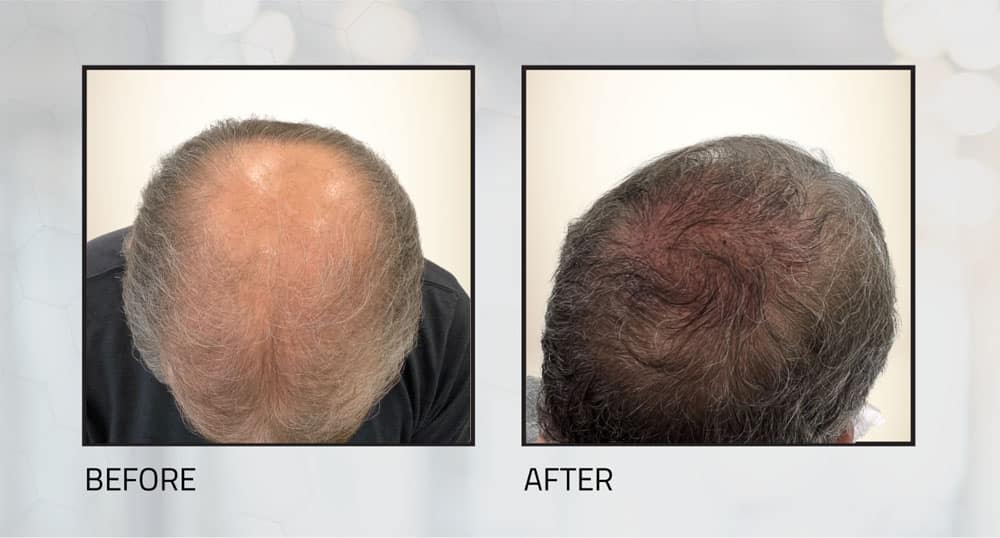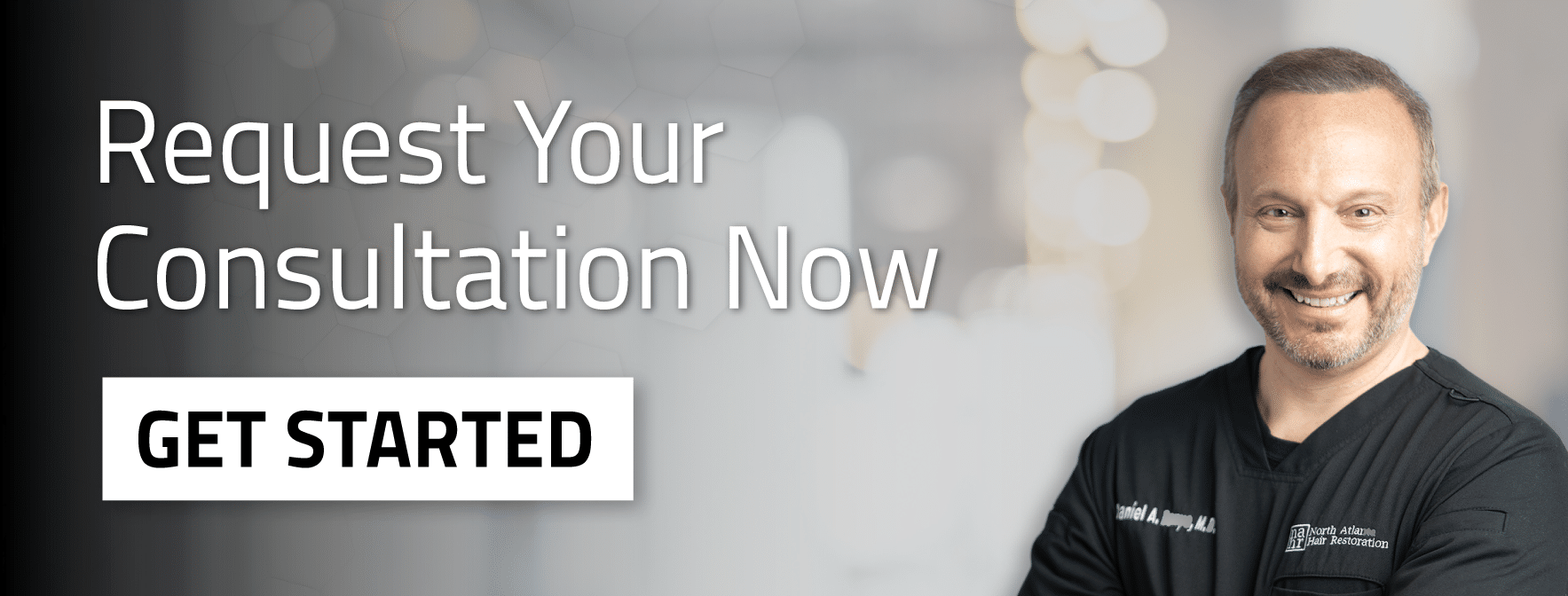One of the most important parts of the hair restoration process is setting realistic goals for treatment.
That’s why our lead surgeon, Dr. Daniel A. Danyo, always makes sure patients know what to expect in terms of healing stages, regrowth, and final results.
For someone just looking into having hair transplant surgery, knowing what to expect and when can be helpful as you embark on your hair growth journey.
So, here’s a bit about what you can expect after a regular or Shave-Less FUE procedure.
Right After Your FUE Hair Transplant
If you’ve had a regular FUE hair transplant, the donor areas and transplant sites will be shaved, so you may want to wear a hat to conceal these areas and any signs of the surgery.
However, if you choose a Shave-Less (also known as No-Shave FUE) transplant procedure, your donor sites won’t be shaved, so you can walk out looking as you normally do, with your original hairstyle pretty much intact.
Some patients opt for a long hair transplant procedure, where the grafts are transplanted at their full length without cropping, for the ultimate in concealment and discretion.
With long hair FUE, not only will you walk out looking like your regular self, you’ll get to see immediately what your hair transplant looks like—including the hair’s texture and direction of growth—without waiting months for it to grow in.
This is why some hair restoration surgeons refer to long hair FUE as Preview FUE, because you get to see what your hair will actually look like, right after the procedure.
The Healing Phase
The first 10 days will be a period of healing, so you’ll need to take special care with washing and styling your hair.
You’ll also need to avoid any heavy exertion, although you can usually return to your regular workouts around day 7.
The area may feel itchy and a little sore as the transplant sites heal, and scabs will also in the area.
This is completely normal, but talk to your doctor about treatments if the itching or pain becomes bothersome.
By day 10, the scabs will be ready to fall out, then the hair regrowth cycle can begin.
Shedding and Hair Regrowth
Roughly 2-4 weeks after your hair transplant surgery, you will likely notice some shedding, which is hair falling out at the sites of the transplant.
There’s no cause for alarm, though—this is NOT a sign your hair transplant has failed.
Known also as shock loss or post-transplant telogen effluvium, it is a perfectly normal process and marks the beginning of a new phase of hair growth.
Rest assured knowing that you should start to see new hair growth right around 3 months after your FUE hair transplant surgery.
When Will I See My Final Hair Transplant Results?
You should start to see robust regrowth and thickness around the 6-month mark—this is also when we usually schedule a follow up appointment with patients.
However, the final results of your hair transplant won’t be fully apparent until 12 to 18 months after your transplant.
Why is that? The hair continues to grow in and thicken over that first year, so you can usually expect your results to just keep getting better over this time.

How Much of a Transformation Can I Expect After a Hair Transplant?
Every patient is different, so hair transplant results can vary widely from person to person.
Factors that influence how much new hair growth you can expect include:
- How extensive your hair loss was
- What kind of hair transplant surgery you had
- How many grafts you got during your hair transplant
- The skill of your surgeon/surgical team
- Your overall health, including things like smoking, chronic disease, etc.
- How well you followed your aftercare instructions
- Aesthetic and age considerations—natural-looking hair will vary with age, looks, ethnicity, and more
Other factors influencing final results are your personal timeline, desire for discretion, and overall hair restoration goals.
Many clients prefer to get a large number of grafts all done in one sitting, if possible, for truly transformative results all in one go.
Other patients prefer to start slower or choose a more subtle improvement for discretion.
They might start with hair restoration at the crown to see how things go, leaving more noticeable restorations—like the hairline—for a later procedure.
It’s important to discuss your hair restoration goals and concerns with your hair transplant surgeon, so you can set realistic goals, manage your expectations, and come up with a surgical plan that works for you.
Want to Know What You Can Expect From a Hair Transplant?
Dr. Danyo can tell you everything you need to know.
Call us at 678-845-7521 or book online to set up a personalized consultation with the doctor and find out all your hair restoration options.
Don’t wait to find out how much more confident you can feel with a natural-looking, thicker head of hair.
Hair Restoration Is What We Do—It’s All We Do, And It Shows
FAQ: Hair Transplant Results
Do I have to wait months to see my hair transplant results?
It does take a few months for hair regrowth to begin, and even longer for the final results of your restoration to fully grow in and thicken.
But the good news is that your regrowth results after a transplant are permanent, so after that initial waiting period, you can expect to enjoy your new look for many years to come!
Is it worth getting a Shave-Less FUE procedure?
Most of our patients think so, especially those with longer hairstyles and women.
The Shave-Less technique lets you keep your hairstyle pretty much intact, with no shaving at the donor sites and much greater discretion.
Or for the ultimate in privacy—and a sneak peek at what your final results will look like—choose a long hair transplant, where there’s no shaving, and the transplanted grafts are kept at their original length.
Can I expect a full head of hair after my transplant?
It depends, since individual factors vary so widely.
If you don’t have extensive hair loss and you have lots of good donor sites with healthy follicles, chances are good that an advanced procedure like FUE can restore lots of healthy thickness right where you want it.
However, this is not always possible, or even desirable for all patients.
The goal for a good hair restoration is natural-looking results, and too much thickness can sometimes look overdone, especially on older patients.
A good hair restoration surgeon can help you understand what you should and shouldn’t expect from your hair transplant and work with you to achieve your aesthetic goals.


